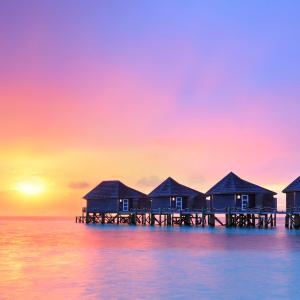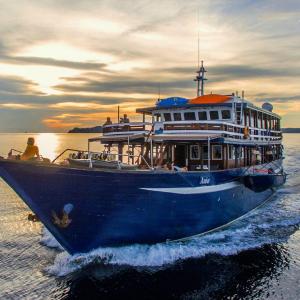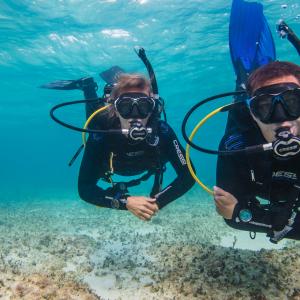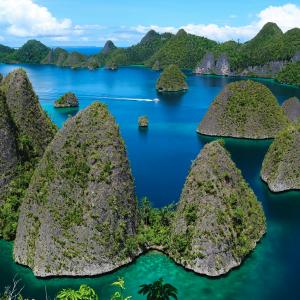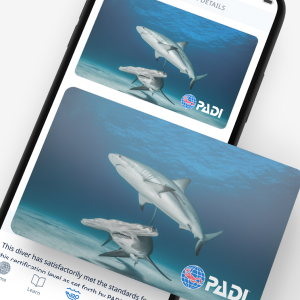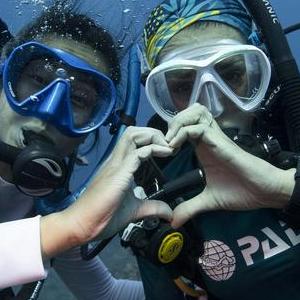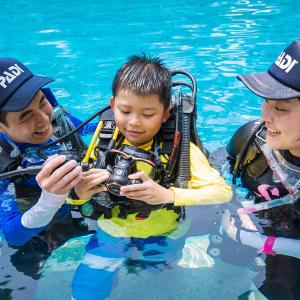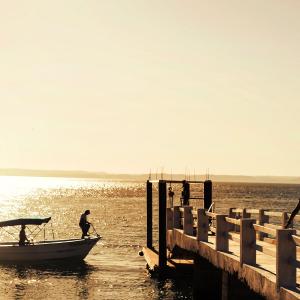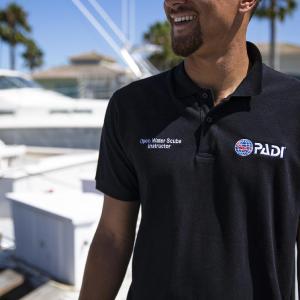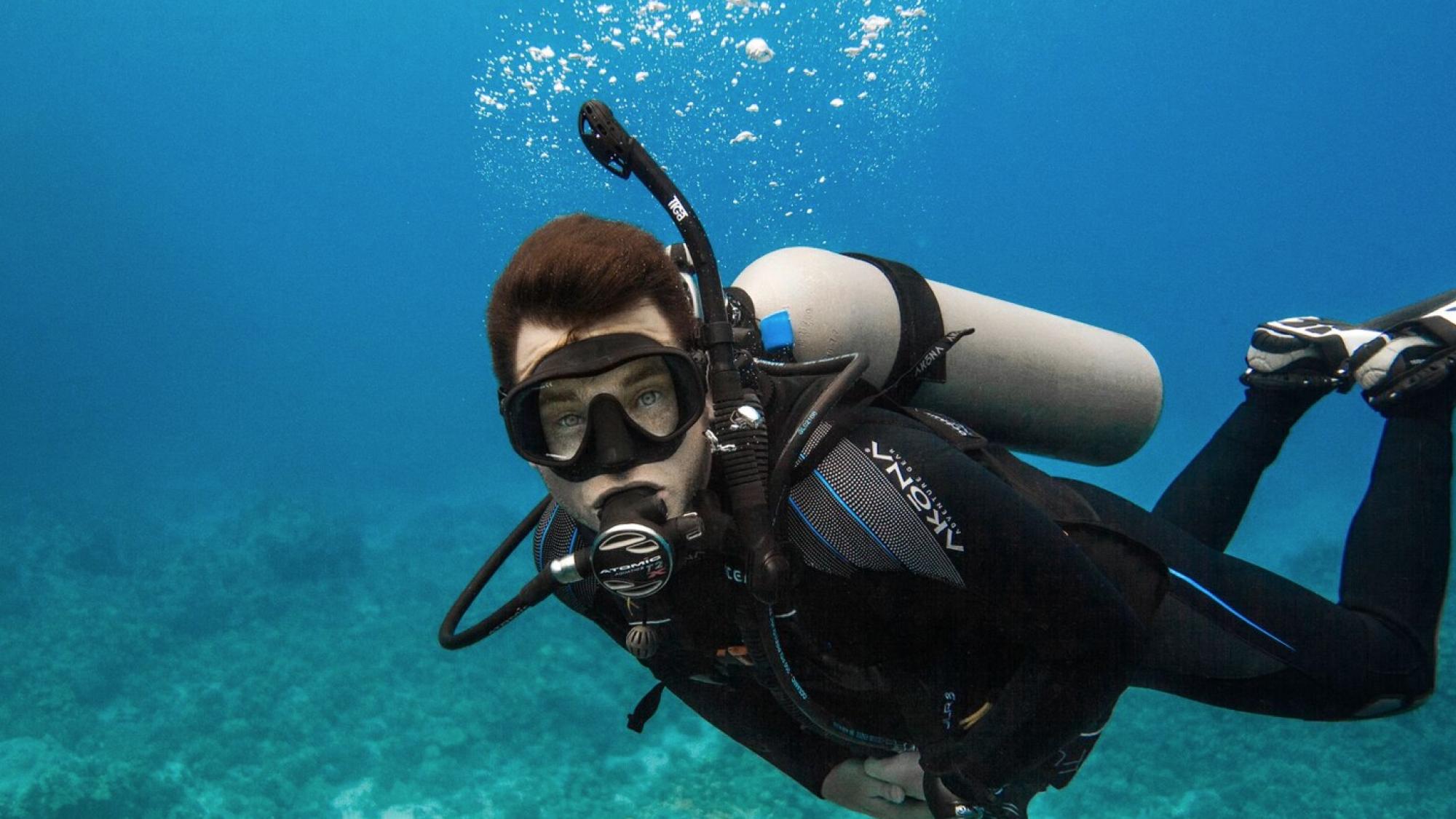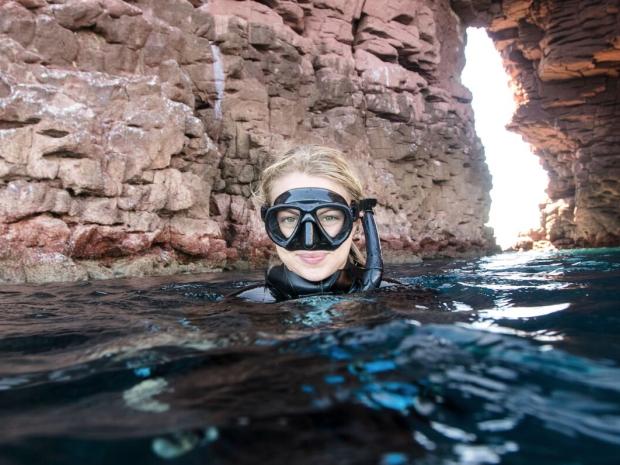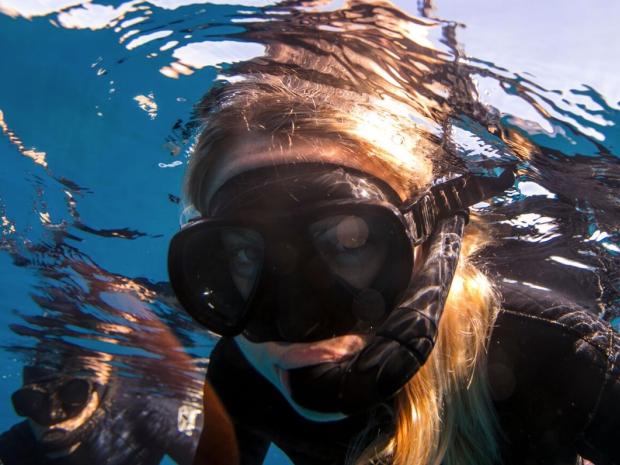โดยทั่วไปถังดำน้ำจะทำจากเหล็กหรืออะลูมิเนียม ขนาดและแรงดันของถังอากาศสคูบาจะกำหนดความจุของก๊าซที่อัดไว้
คำอธิบาย
ถังอากาศแรงดันสูงเป็นภาชนะที่มีขนาดค่อนข้างเล็กแต่แข็งแรงมาก ซึ่งสามารถบรรจุก๊าซอัดไว้ปริมาณมากได้ การสามารถพกพาก๊าซติดตัวไปได้คือสิ่งที่กำหนดความหมายของ SCUBA (self containeduunderwater breathing apparatus) ไม่ว่าจะเติมอากาศกรองปกติหรืออากาศเอ็นริชแอร์ ไนตรอกซ์ (ปริมาณออกซิเจนสูงและไนโตรเจนต่ำ) หรือไตรมิกซ์ (ส่วนผสมของก๊าซสามชนิด) สำหรับการดำน้ำ Technical Diving ถังอากาศถือเป็นอุปกรณ์ที่สำคัญที่สุดชิ้นหนึ่ง สามารถเข้าไปที่ศูนย์ดำน้ำหรือรีสอร์ท PADI เพื่อขอคำแนะนำเกี่ยวกับถังอากาศ ไปที่ Scuba Diving Magazine เพื่ออ่านข้อมูลเพิ่มเติมเกี่ยวกับถังอากาศ
Standard Features
- ถังอากาศทำจากเหล็กหรือโลหะผสมอะลูมิเนียม แม้ว่าจะสามารถใช้วัสดุผสมอื่น ๆ ได้
- ถังอากาศสคูบาเหล็กมีความแข็งแรงและทนทานต่อความเสียหายจากภายนอก แต่จำเป็นต้องได้รับการดูแลอย่างเหมาะสมเพื่อหลีกเลี่ยงสนิมภายใน ถังอากาศลอยตัวเป็นลบ ถังอากาศสคูบาที่มีความจุสูงสุดทำจากเหล็ก
- ถังอากาศสคูบาอะลูมิเนียมมีแนวโน้มที่จะเกิดรอย รอยบุบและรอยขีดข่วนจากภายนอกได้ง่ายกว่าถังอากาศสคูบาเหล็ก แต่ทนทานต่อการผุกร่อนภายในได้ดีกว่า
- วาล์วควบคุมการไหลของอากาศจากถังและเชื่อมต่อกับตัวเร็กกูเลเตอร์กับระบบ DIN (สกรูเข้า) หรือระบบ Yoke (ขายึด) โอริงจะปิดผนึกตัวเร็กกูเลเตอร์ของคุณเข้ากับวาล์วถังอากาศ
- วาล์วถังอากาศเดี่ยวที่ทำจากทองเหลืองชุบโครเมียมเป็นชนิดที่พบเห็นได้ทั่วไปที่สุด
- นักดำน้ำ Technical Diver อาจใช้ท่อร่วมถังอากาศสองถังหรือใช้วาล์ว Y หรือวาล์ว H เพื่อเชื่อมต่อตัวเร็กกูเลเตอร์สองตัวเข้ากับถังอากาศหนึ่งตัว
- วาล์วหลายตัวมีเบิรสท์ดิสค์ ซึ่งเป็นเบิรสท์ดิสค์ทองแดงบาง ๆ ที่จะแตกออก ทำให้มีอากาศไหลออกได้หากแรงดันในถังอากาศสูงเกินไป
- สติกเกอร์ตรวจเช็ค Visual inspection ปัจจุบันแสดงให้เห็นว่าถังอากาศได้รับการตรวจสอบโดยมืออาชีพเกี่ยวกับการผุกร่อนภายในและภายนอกภายในปีที่ผ่านมา
- ถังอากาศต้องมีการทดสอบแรงดัน (ไฮโดรสแตติก) เป็นระยะ ระยะเวลาการทดสอบจะแตกต่างกันไปในแต่ละภูมิภาค ตั้งแต่ 2 ถึง 7 ปี
Optional Features
- ขนาดและแรงดันของถังอากาศจะกำหนดความจุ
- ถังอากาศจากอเมริกาเหนือมีความจุตั้งแต่ถังโพนี่ มีขนาด 6 ถึง 40 ลูกบาศก์ฟุต (ถังอากาศสำรอง) ไปจนถึงถังอากาศหลัก มีขนาด 45 ถึง 150 ลูกบาศก์ฟุตขึ้นไป
- ในประเทศที่ใช้ระบบเมตริก ถังอากาศบรรจุจะมีตั้งแต่ขนาด 1 ถึง 4 ลิตร (ถังอากาศสำรอง) ไปจนถึงขนาด 6 ถึง 15 ลิตรขึ้นไป
- ถังอากาศที่ใช้กับอากาศเอ็นริชแอร์จะต้องเป็นไปตามมาตรฐานการบริการออกซิเจน และต้องมีเครื่องหมายสีเขียวและสีเหลืองที่ชัดเจนเพื่อระบุว่ามีอะไรอยู่ในนั้น คุณจะสนใจไหม เข้าเรียนหลักสูตร PADI Enriched Air Diver
- ฝาครอบถังอากาศ – ไม่ว่าจะเป็นพลาสติก ไวนิลหรือยาง – ช่วยให้ถังอากาศที่มีก้นโค้งมนสามารถตั้งได้ในระหว่างการจัดเก็บ และช่วยปกป้องผิวจากความเสียหายที่เกิดจากถังอากาศ
- อุปกรณ์เสริมอื่น ๆ สำหรับถังอากาศ ได้แก่ ตัวป้องกันตาข่ายที่สวมทับถังอากาศ ฝาครอบวาล์วที่ช่วยป้องกันไม่ให้น้ำและฝุ่นเข้าไปในช่องวาล์วเปิด รวมถึงที่จับและที่หิ้วที่ช่วยให้การขนถังอากาศสะดวกยิ่งขึ้น
How to Choose
ไม่ว่าคุณจะมีถังอากาศหนึ่งถัง หลายถังหรือไม่มีเลย ขึ้นอยู่กับกิจกรรมการดำน้ำและสถานที่ ในการเลือกถังอากาศที่เหมาะสมกับคุณ โปรดพิจารณาถึงขนาดและความจุ
- ยิ่งขนาดใหญ่กว่ามักจะดีกว่า เว้นแต่ว่าคุณเป็นคนตัวเล็กและต้องขนถังไปไกล ๆ ขอคำแนะนำจากมืออาชีพด้านการดำน้ำที่ศูนย์ดำน้ำหรือรีสอร์ท PADI ของคุณ
- เมื่อคุณทราบขนาดที่ต้องการแล้ว ให้เลือกถังอากาศเหล็กหรืออะลูมิเนียม
- เลือกวาล์ว Yoke หรือ DIN ขึ้นอยู่กับตัวเร็กกูเลเตอร์ของคุณ
- ลองพิจารณาใช้ยางหุ้มถังอากาศหรือแผ่นป้องกันตาข่าย และหาโอริงสำรองมาด้วย
- ตรวจสอบให้แน่ใจว่าถังใหม่ของคุณมีสติกเกอร์ตรวจเช็ค Visual Inspection หรือสติกเกอร์ตรวจเช็คอากาศเอ็นริชแอร์ (หากคุณวางแผนที่จะใช้สำหรับการดำน้ำด้วยอากาศเอ็นริชแอร์)
Maintenance
- ควรปิดกั้นหรือยึดถังอากาศของคุณไว้เสมอ เพื่อไม่ให้ล้มหรือกลิ้งไปมาได้ง่าย ซึ่งอาจทำให้ถังอากาศ อุปกรณ์อื่น ๆ หรือตัวคุณเองเสียหายได้
- นอกจากการล้างถังอากาศและวาล์วด้วยน้ำสะอาดและเก็บไว้ในบริเวณที่เย็นแล้ว อย่าปล่อยอากาศออกจากถังอากาศจนหมดเกลี้ยง แต่ควรให้มีอากาศอยู่ภายในถังอากาศเสมอเพื่อป้องกันความชื้น
- ควรทำการตรวจเช็ค Visual Inspection ถังอากาศเป็นประจำทุกปี และทดสอบแรงดันตามความจำเป็น
- ปฏิบัติตามข้อควรพิจารณาในการบำรุงรักษาตามคำแนะนำของผู้ผลิต

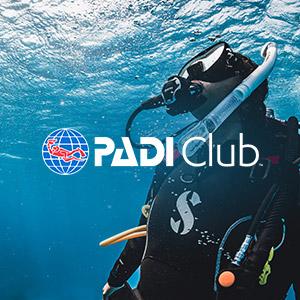
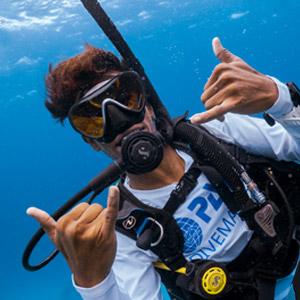

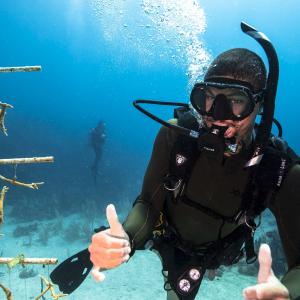
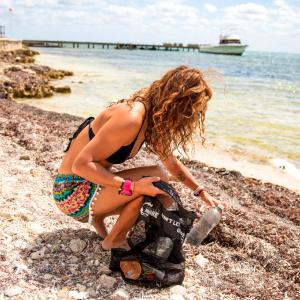
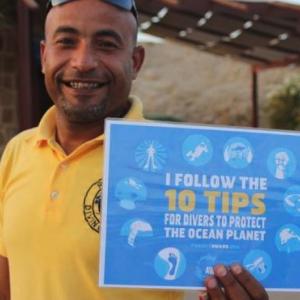
 เศษซากทะเล
เศษซากทะเล
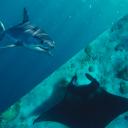 ยพันธุ์ฉลามและกระเบนที่เสี่ยงต่อการสูญพันธ์ุ
ยพันธุ์ฉลามและกระเบนที่เสี่ยงต่อการสูญพันธ์ุ
 Adopt The Blue
Adopt The Blue
